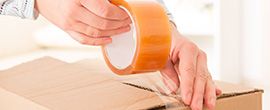Piano Moving Made Easy: Avoiding DIY Hazards
Posted on 18/06/2025
Moving a piano is no easy feat. Whether you own a grand piano, upright, or a digital piano, the instrument is not only valuable monetarily but also sentimentally. Many homeowners are tempted by DIY piano moving to save costs, but the risks and hazards associated with self-moving often outweigh the benefits. In this comprehensive guide, we explore how to make piano moving easier and safer, avoiding common DIY hazards while ensuring your cherished instrument is transported securely.
Why Moving a Piano Is So Challenging
Some might think, "It's just a piece of furniture--how difficult can it be to move a piano?" But here's the truth:
- Pianos are heavy and awkwardly shaped. Even a small upright piano often weighs 300-400 pounds, while grand pianos can tip the scales at over 1,000 pounds!
- Delicate components: Pianos consist of thousands of moving parts, intricate strings, and sensitive keys, all of which can be easily damaged.
- Irreplaceable value: Whether it's a family heirloom or a top-of-the-line instrument, pianos are expensive and often hold significant emotional value.
- Risk of injury: Due to their size and weight, improper handling can result in severe injuries or even permanent damage to your home or the piano itself.
In short, it's not just about muscle--it's about technique, equipment, and experience.

Common Dangers of DIY Piano Moving
The Hazards to Your Piano
- Scratching and scuffing: Even minor bumps can mar wooden finishes and cabinetry.
- Tuning problems: Sudden movements and impacts can knock your piano out of tune--or worse, snap internal wires.
- Structural damage: Mishandling may warp the frame, bend the pedals, or break the legs.
- Broken keys and hammers: Jostling can misalign, jam, or fracture the piano's delicate interior.
The Hazards to Your Safety
- Back injuries and sprains: Lifting a 500-pound piano without proper technique is a recipe for serious harm.
- Pulled muscles and slips: Awkward turns, stairs, and narrow spaces increase the risk of falls.
- Damage to property: Dropping or dragging a piano can ruin hardwood floors, dent walls, and damage door frames.
Hidden Costs of DIY Piano Moving
- Repair bills for the piano or your home
- Medical costs from injuries
- Replacement or tuning costs
- Lost time and added stress
It's easy to see why choosing the right method is crucial for piano relocation success.
Professional Piano Movers vs. DIY: The Key Differences
Advantages of Hiring Professional Piano Movers
- Specialized equipment: Pros use heavy-duty straps, dollies, skid boards, padding, and ramps to move pianos safely.
- Training and technique: Experienced movers understand load distribution, balance, and proper lifting posture to minimize risk.
- Insurance Coverage: Many professional piano movers offer insurance for your instrument and home during the move.
- Efficient and stress-free: Letting experts handle the job frees up your time and relieves mental strain.
Why DIY Piano Moving Fails
- Lack of proper tools: Most households don't own piano dollies, moving pads, or stair-climbing straps.
- Insufficient manpower: Moving a piano safely requires a team of strong, well-coordinated helpers.
- No insurance: If damage occurs during your own attempt at piano moving, you bear the full cost.
- Poor planning: Overlooking measurements, awkward corners, steep stairs, and tight doorways can spell disaster.
How to Prepare for a Piano Move
Essential Steps Before Moving Your Piano
- Measure all doors, halls, and stairways: Compare dimensions to ensure your piano will fit through every space on both the pickup and delivery ends.
- Clear pathways: Remove rugs, furniture, and other tripping hazards before moving begins.
- Protect your floors: Use runners, plywood sheets, or heavy blankets to shield floors from bumps and scratches.
- Gather a strong team--or hire pros: Never attempt to move a piano alone. At least 3-6 people are often needed, depending on the instrument's size and complexity of the move.
- Double-check weather conditions: Avoid moving in rain or snow, which can make surfaces slippery and damage your instrument.
- Notify your moving insurance or consult a professional piano moving company to verify your policy coverage.
Professional Piano Moving Techniques--What Sets the Experts Apart
Specialized Tools and Equipment
- Piano boards (skid boards): Custom-cut boards used to strap and secure upright and grand pianos during transport.
- Moving dollies: Heavy-duty wheeled platforms designed to support the weight of a piano safely.
- Moving straps and harnesses: Distribute weight evenly and prevent shifting.
- Padding and blankets: Protect delicate finishes and absorb shock.
- Ramps and hoists: Needed for loading into transport vehicles or navigating stairs without putting undue stress on the piano.
Experience and Planning
- Route planning: Identifying the best path for moving a piano minimizes difficult turns and obstacles.
- Team coordination: Pro movers communicate and work in sync, drastically reducing the risk of accidents.
- Instrument stabilization: Ensuring parts like lids, pedals, and music racks are secured or removed prevents internal and external damage.
Essential Safety Tips for Piano Moving
If You Must Attempt DIY Piano Moving
*Note: It's always safest to hire professional piano movers. But if a DIY piano move is absolutely necessary, follow these critical safety tips:*
- Rent or borrow proper equipment--moving straps, a piano dolly, padding, and skid boards are non-negotiable.
- Never lift by the legs--legs are fragile and not meant to support the piano's full weight.
- Remove detachable parts--such as music stands, lids, or legs on a grand piano.
- Teamwork is key--coordinate movement and communicate clearly throughout the process.
- Take your time--hurrying increases the chance of accidents.
- Watch your fingers--keep hands clear of pinch points when setting the piano down.
- Plan ahead for rest breaks--lifting and carrying heavy objects is exhausting and increases the risk of mistakes if fatigued.
- Secure the piano in the vehicle--use straps or ropes to prevent movement during transit.
What to Expect from a Professional Piano Moving Service
How Piano Movers Operate
- Initial assessment: Movers visit or obtain details about both locations to plan precisely.
- Protection: The piano is wrapped, draped, or padded prior to movement.
- Disassembly: For grand pianos, legs and pedals are often removed to prevent damage and ease passage through tight spaces.
- Expert handling: The instrument is lifted using correct posture and techniques.
- Reassembly and placement: At the new location, the piano is reassembled, placed exactly as desired, and sometimes even retuned (or recommendations for post-move tuning are provided).
The Cost of Professional Piano Moving
The cost of piano transport by professionals depends on:
- Type and size of the piano
- Distance to be traveled
- Number of floors and stairs involved
- Complexity of the path
- Local rates
While you may pay several hundred dollars for a professional move, this is far less costly than repairing a damaged instrument--or, worse, replacing one after a catastrophic accident.
After the Move: Caring for Your Piano
- Let the piano acclimate: After transit, give your instrument 1-2 days to adjust to the new environment before tuning or use.
- Schedule a professional tuning: Moving, even under ideal conditions, can affect pitch. Arrange for an expert tuning.
- Inspect the piano for signs of damage: Look for scratches, loose keys, or changes in sound quality.
- Place your piano wisely: Choose a location away from direct sunlight, radiators, or moisture, protecting the instrument's finish and internal components.

FAQs About Piano Moving
Can any regular moving company handle my piano?
Many general movers lack the training or equipment for specialty piano moving services. Always verify that your moving company has expertise in piano transportation.
Do digital pianos need professional moving help?
Some digital pianos are portable, but larger models are heavy and contain sensitive electronics. At least two strong people and proper protection are required.
Will my piano need to be tuned after moving?
Almost always, yes. Moving can shift internal parts and affect tuning, especially over long distances or through changing climates.
Is piano moving insurance worth it?
Absolutely--insurance provides peace of mind against accidental damage or injury during the move.
Conclusion: Moving Pianos the Smart Way
Piano moving made easy is not just about strength--it's about technique, planning, and experience. While a DIY approach may seem tempting, the hazards and hidden costs make professional piano movers the smarter, safer option. Protect your investment, your home, and your health by avoiding DIY piano moving hazards and choosing reliable experts whenever possible.
Remember: Your piano deserves the best care during every move. Don't gamble with its safety--make your next piano move as easy and stress-free as possible!






